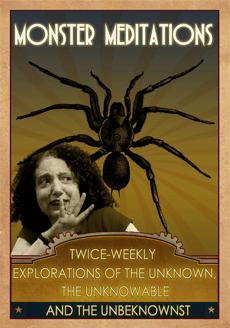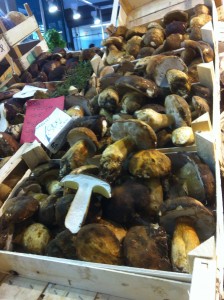Food—even more than fashion—can be a shortcut that helps create realistic characters. And sharing a meal is a natural setting for characters to reveal personal information, back-stories, flaws and more.
My current novel-in-progress features a few meals. It’s not a Donna Leon-style foodie love-fest, but the characters get to know one another while eating and discuss important issues over meals. The protagonist’s first meal with her romantic interest is pizza. He’s pleased that she is not a vegan, gluten-free or even a picky eater. Food also crops up in the story as a way to examine and divide people. A caterer complains about the boring and old-fashioned taste of his wealthy clients. An art connoisseur reveals that he’s a food snob, refusing the muffins in the museum’s cafeteria that the other characters enjoy. And love is demonstrated with chocolate—of course.
Being conscious of what my characters eat, or don’t eat, has ramped up the attention I pay to what my friends eat. I know a few bread and butter lovers. They tear into the breadbasket and slather on butter, while I’m trying to limit my white flour consumption. Sometimes I just have to join in.
I’ve observed that sharing a dessert is a wonderful bonding experience and the decision-making process that arrives at an apple crumble with ice cream or a lemon mousse can be revelatory. Who concedes, who controls and perhaps demures—until the spoons come out—all tell mini stories.
In the story, a young middle-class woman encounters sophisticated, world traveling people with much more money than her family has ever seen. Food, or more to the point, experience with food, serves as a demarcation between classes and groups of people. Invitations to dine are bridges between groups while working for the caterer at a fancy party clearly marks the have/have not division.
In some parts of the story, what she ate reveals who she is or who she is becoming.
Do you have any thoughts on food as a storytelling tool?






Food can add a lot to a story’s atmosphere. One of the novels I’ve been working on with a critique and copy edit had a great scene where the protagonist has dinner with a former juror she needs to interview. Ultimately, that scene got rewritten and set in the courthouse instead, but the author did a marvelous job of conveying how sensual eating is and the chemistry between the two characters really sparked on the page a lot more due to eating an Italian meal together.
Yes! There’s an emotional content in sharing food. It could be romantic sparks OR any other kind of spark. Also food reveals a point-of-view and the history of a character. The man who still eats exactly as he did as a child (burgers & mac ‘n cheese, etc.) is a particular kind of man, as is the man who must eat the most exotic & expensive options at all times.
Food Glorious Food! (Sometimes, I get stuck with classic musical numbers in my head.)
I hadn’t actually given the subject much thought until now Candy but it does open up a world of possibilities. Not just the food of course, but the setting in which it’s eaten. A cup of tea or chocolate with a hot dog eaten at a roadside stand on the way back from the opera can be just as full of meaning and romantic as a candlelit dinner for two if the circumstances are right. Your view of the food when eating at a catered function is a lot different to that of the caterer.
Food for thought?
xxx Huge Hugs xxx
The setting is important!
A picnic can be romantic or it can be the setting for a fraught family reunion.
A little cafe can be the location where a mysterious stranger enters the protagonist’s life or it can be the friendly, daily coffee that sets up the character as a good person in the mind of the readers—how people treat the barista, waitstaff, etc. is always revealing. Don’t you think?
Vital! Maybe because I’m such a foodie myself, but I can’t seem to write a story /without/ food in it somehow. My background is European, so to me, food has always been synonymous with hospitality and love. No one left our house with an empty stomach. 😀
I get that old world hospitality!
It always surprises me when food is NOT offered or when the offerings are meager. It’s like there’s a gene missing.
Food, as an way of expressing character, is a valuable storyteller tool. Adventurous people try new foods, controlling people try to control what other people eat, loving people want to nourish the people they care about, etc. etc. etc. It can all boil down to a red sauce simmering in a pot on the stove during a conversation or the aroma of a chicken roasting from the apartment next door.
Food, food, food…
In addition to all of the above, food is also a way to introduce another sense into your writing – taste!
YES of course!
Why didn’t I think of that? Sight, sound, touch, aroma and TASTE. Characters—even those without magical, additional senses—are multi-sense creatures that experience the work in multi-dimensions. Food offers great opportunities to explore sensory, sensuous experiences. Everything from the bitterness of burnt coffee beans to the creamy pleasure of a chocolate mousse.